Laugen Tessinerbrot
Make one of Switzerland's favorite breads — the cantonal bread for Ticino, with an irresistible pretzel patina.
Welcome to my new Swiss Recipes newsletter!
Thank you so much for being here. I’m excited to finally share this with you!
You’ll find some information about the Tessinerbrot (aka Pane Ticinese) below, followed by a recipe. But first, here’s a quick introduction to my NEW newsletter.
Here’s how it works:
Starting today and continuing every Thursday, discover a traditional Swiss dish, either sweet or savory, via your FREE subscription to this newsletter. This can include breads, soups, stews, salads, savory tarts, desserts and more!
Learn about regional specialties and more modern classics from all across Switzerland, such as how and why they started, as well as where you can still find them today.
A FREE newsletter subscription will also include assorted Swiss travel recommendations, culinary news and links to seasonal recipes.
Why Should I Become a Paid Subscriber?
PAID SUBSCRIBERS also receive a recipe for the weekly Swiss dish.
Today, you’re getting my recipe for Laugen Tessinerbrot (see below) as a gift.
Starting April 10, 2025, only PAID subscribers will receive an overview of a traditional Swiss specialty AND a recipe for it.
Why Did I Re-Launch My Newsletter via Substack?
After publishing recipes for nearly 10 years via my website, cuisinehelvetica.com, I’ll now focus on sharing recipes primarily through this new weekly Substack newsletter and through my cookbooks.
By becoming a PAID subscriber to my newsletter, you’re providing me with a steady source of income to ensure I can continue future research, writing and recipe development related to Switzerland’s culinary heritage.
Please note: No matter what, everyone still has access to all the recipes I’ve already shared for FREE on my website.
About Tessinerbrot (Pane Ticinese)
As you may already know, Switzerland has over 200 different kinds of bread. Some say there are more. Perhaps even 300!?
When I ask people to tell me their favorite Swiss bread, a popular answer is the cantonal bread from Ticino: Pane Ticinese (Italian), Tessinerbrot (German) or Pain Tessinois (French). This fluffy loaf of bread typically has 5-6 mini loaves baked together. After brushing its surface with a beaten egg, bakers make a deep cut lengthwise in the center of the dough before it bakes.
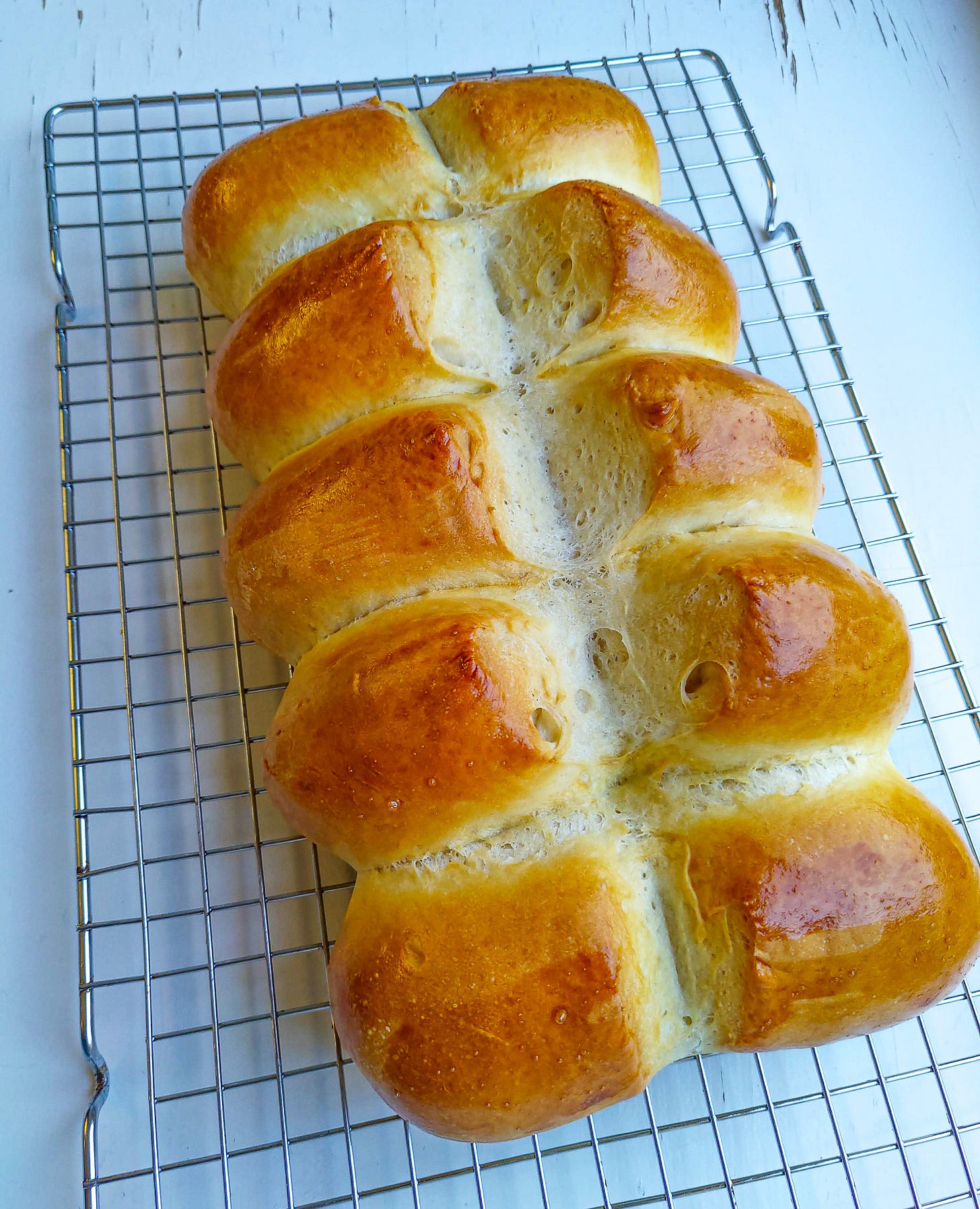
In fact, every Swiss canton (similar to states) has their own special bread. Switzerland has 21 cantonal breads in all, as some of the 26 cantons share a bread.
These cantonal breads started in the 1950s, when they were launched at a trade fair in Lugano by the Schweizerischer Bäcker- Confiseurmeister-Verband (Swiss Association of Master Bakers and Confectioners). Some of the cantonal breads were created for this campaign, while others matched existing loaves found within their cantons. In Valais, for example, the pain de seigle (rye bread) had already been around for generations. And Ticino’s cantonal bread resembles earlier examples of similar breads in Switzerland and across the border in Italy.
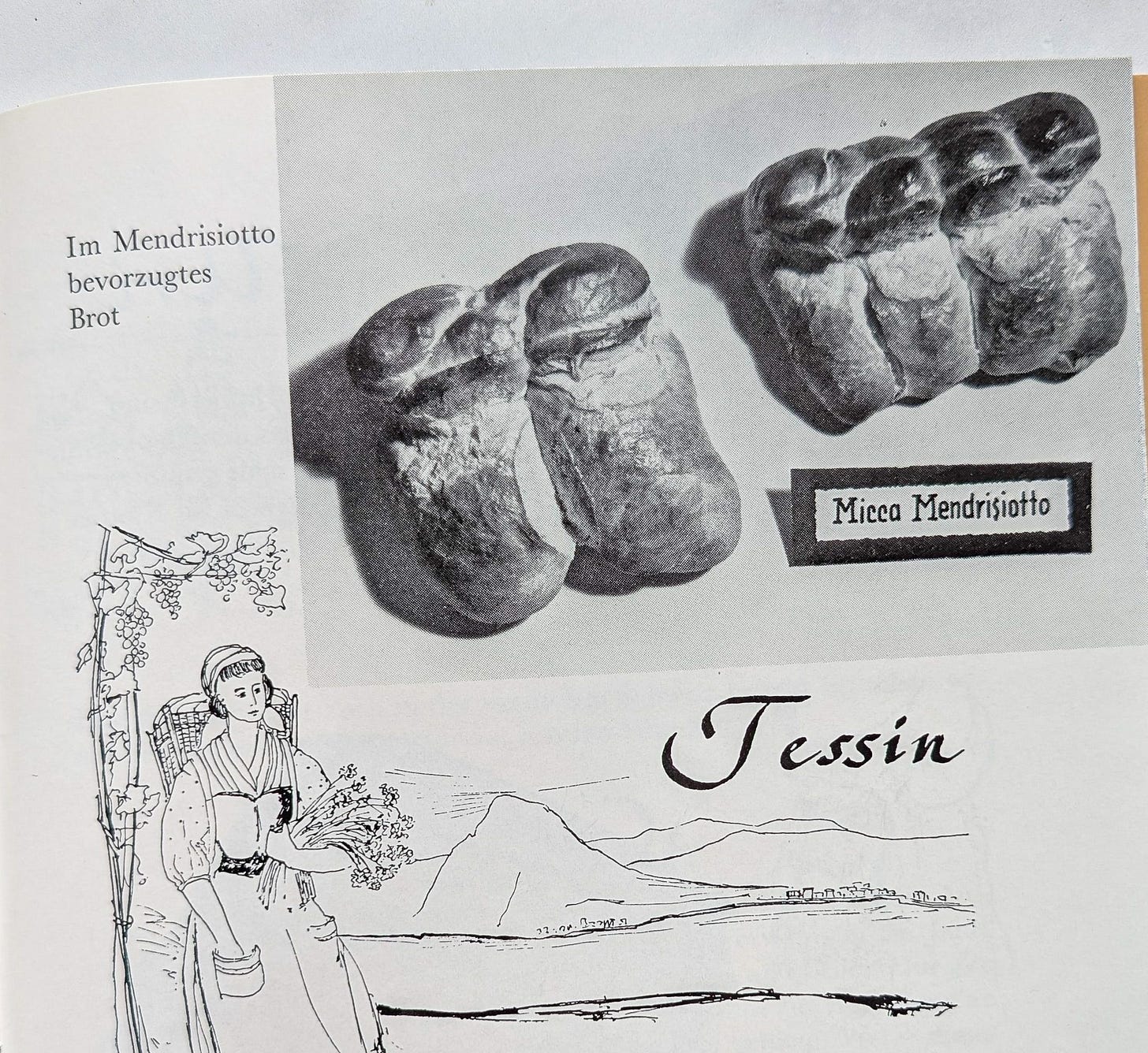
Where to find Pane Ticinese: Nearly every bakery and supermarket in Switzerland makes this bread. Just make sure to ask for it using the name that matches the language of the Swiss region you’re in!
Pretzelized Pane Ticinese
Laugen is the German word for lye, which bakers use in Switzerland to make soft bretzels (pretzels). Beyond bretzels, you will also find Laugen Gipfel (pretzel croissants) and Laugenbrötchen (pretzel rolls), also referred to as Silserbrot (German) or Pain de sils (French).
In German-speaking Switzerland, I have also seen Laugen Tessinerbrot, the pretzel version of the cantonal bread from Ticino. I love both pretzels and Pane Ticinese, so the combination is irresistible!
Recipe: How to make Laugen Tessinerbrot
A fluffy, segmented loaf of bread that pulls apart easily. A great bread for making sandwiches.
Prep: 2 to 3 hrs.
Bake: 20-30 mins.
INGREDIENTS
Dough:
500 g (4 cups) all-purpose flour or bread flour*
9 g (1 ½ teaspoons) salt
25 g (2 tablespoons) olive oil
7 g (2 ¼ teaspoons) dry yeast or 20 g fresh yeast
280 ml (1 cup + 3 tablespoons) water, lukewarm
Pretzel bath:
1 liter (4 ¼ cups) water
100 g (⅓ cup + 1 tablespoon) baking soda
18 g (1 tablespoon) salt
INSTRUCTIONS
Whisk the flour and salt together in a large mixing bowl. Make a well in the center of the bowl. Add the olive oil to the well, but do not mix it in. Set the bowl aside.
Add the yeast to the lukewarm water and let it sit for a few minutes. Then, whisk until the yeast has fully dissolved. Pour into the center of the flour mixture in the large bowl and stir everything together to form a dough.
Kneading the dough: On a lightly floured surface, knead the dough for about 10 minutes by hand, or use an electric mixer with a dough hook. When the dough has become smooth and elastic, place it in a large bowl. Cover the bowl with a damp kitchen towel and let it rise for about 1-2 hours, until doubled in size.
Shaping the dough: Once the dough has doubled in size, remove it from the bowl and then divide the dough into five equal pieces. Form these pieces of dough into elongated mini-loaves of equal length. Place the mini-loaves, with some space in between them to account for rising, on a baking sheet lined with parchment paper. Cover loosely and let them rest for 30 minutes.
Baking soda bath: When the loaves are nearly done with their 30-minute rest, start preparing the baking soda bath. Add the water, baking soda and salt to a medium saucepan (wide enough to fit the risen loaves of dough). Whisk these ingredients together and bring the mixture to a boil, stirring occasionally. When it comes to a boil, remove the pan from the stove to a heat-safe surface. Then, add one of the loaves to the water bath, top down, for 30 seconds. Using a slotted spoon, remove the loaf from the bath, draining the excess water, and place it back on the baking sheet with parchment paper, with the top side still facing up. Repeat this process with the remaining four loaves, placing them together on the baking sheet to create one large loaf.
Using a wet serrated bread knife, make a deep slice through the center of the loaf.
Bake for 20-30 minutes at 200°C / 400°F until the surface becomes chestnut brown. Place on a wire rack to cool.
Tip: Bakeries in Switzerland may brush on a gum arabic solution to give baked pretzels and other pretzel breads a shiny surface. I like to brush on a thin layer of melted butter instead, as I’ve done in the photo above.
*In Switzerland, I would use Weissmehl (DE) / Farine blanche (FR) / Farina blanca (IT) to make this bread.
Thank you so much for reading my first Substack newsletter!
I look forward to building this community of Swiss food enthusiasts with you—sharing stories, recipes, tips and more.
From my Swiss kitchen to yours, Bon appétit, En Guetä, Buon appetito, and Bun appetit! (Did you know Switzerland has four official languages?)
-Heddi





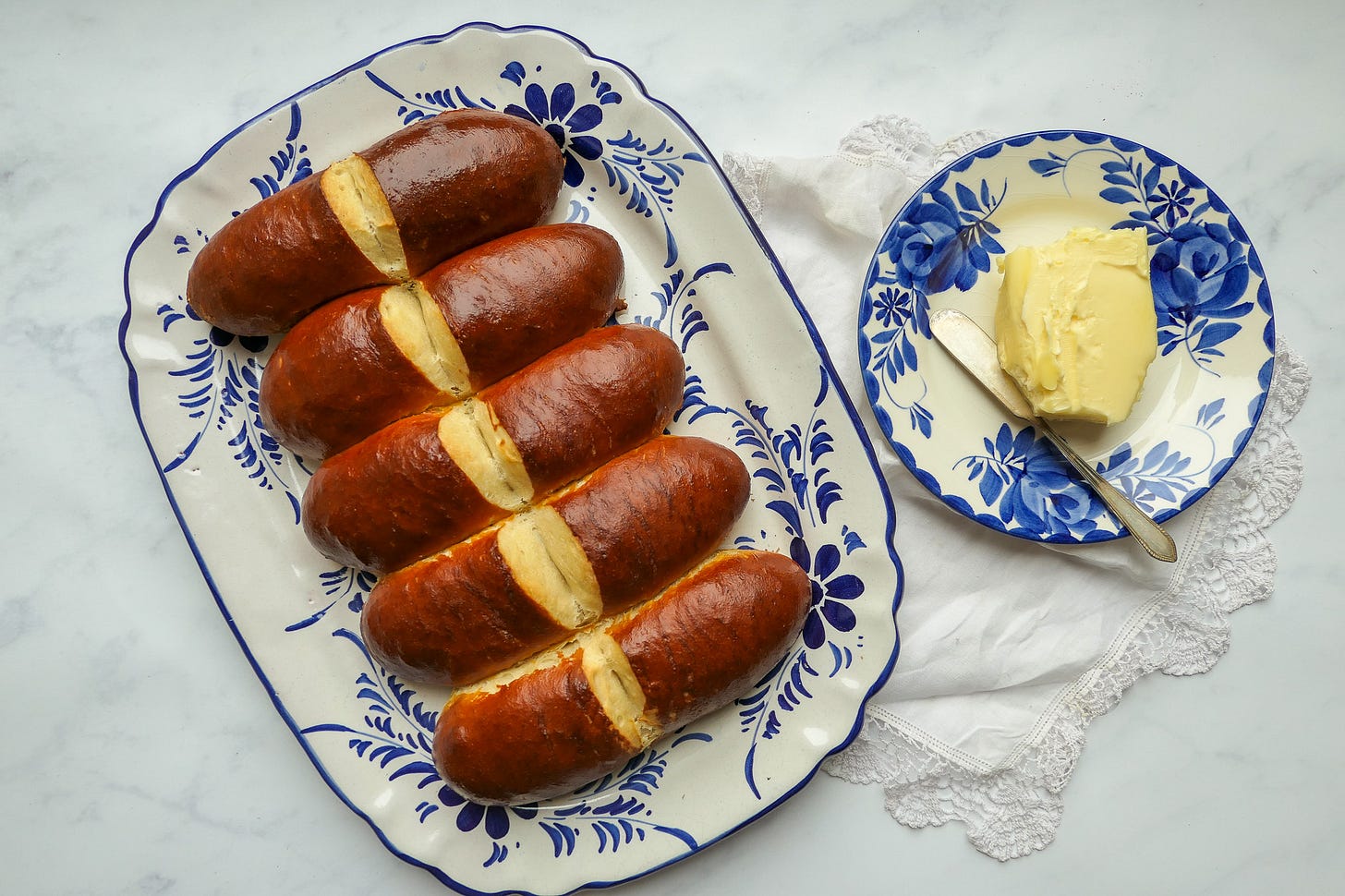
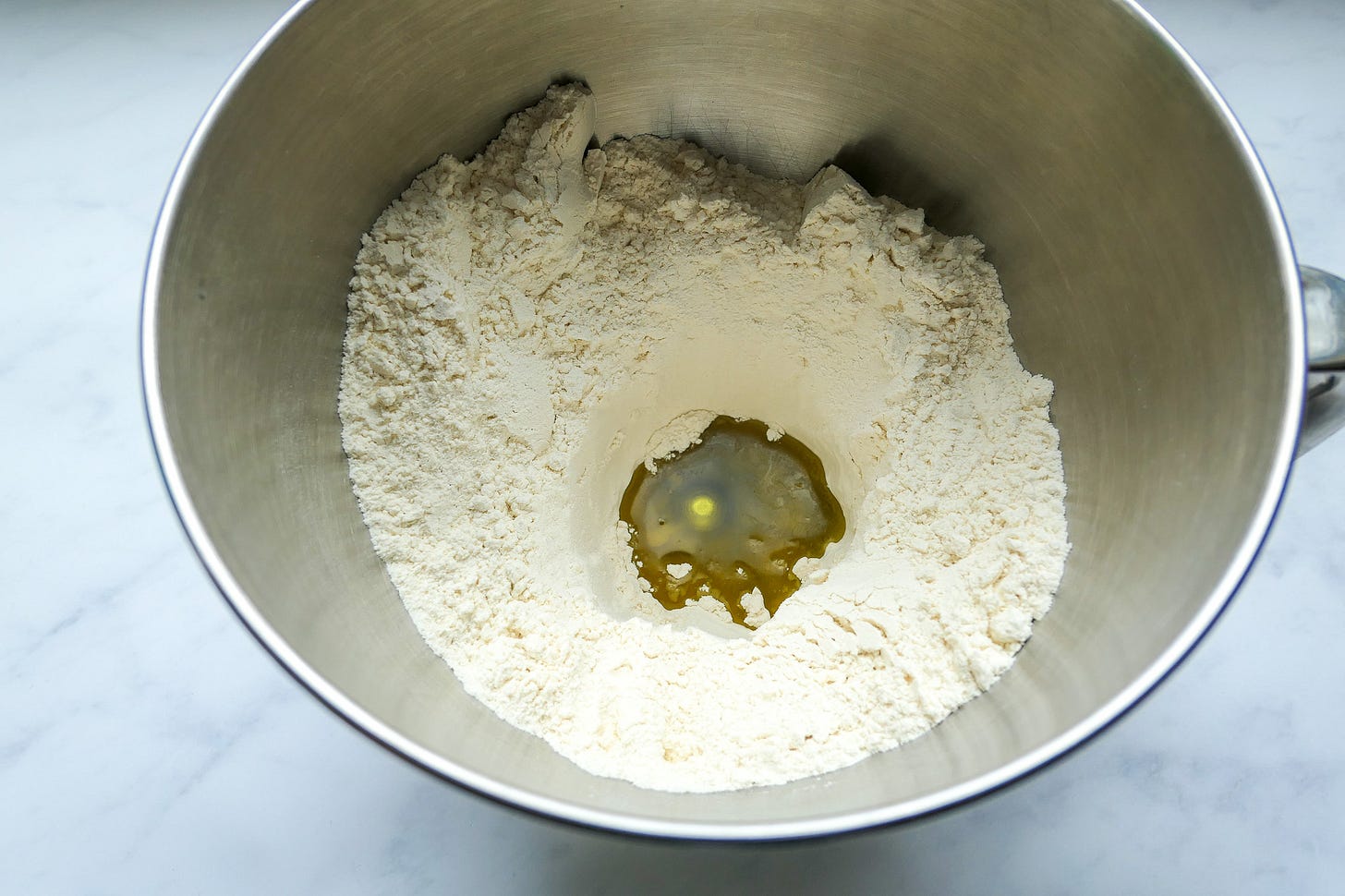
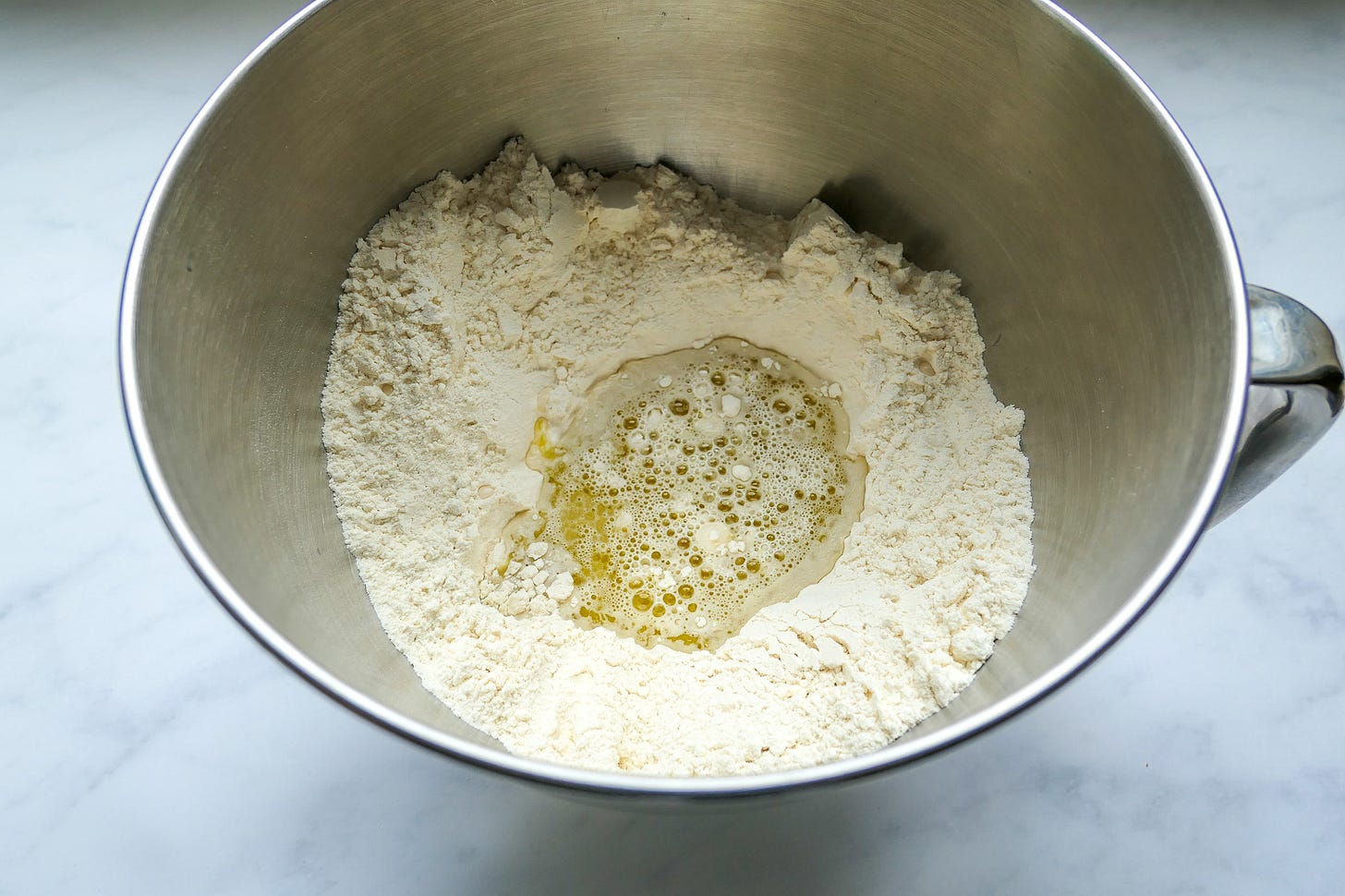
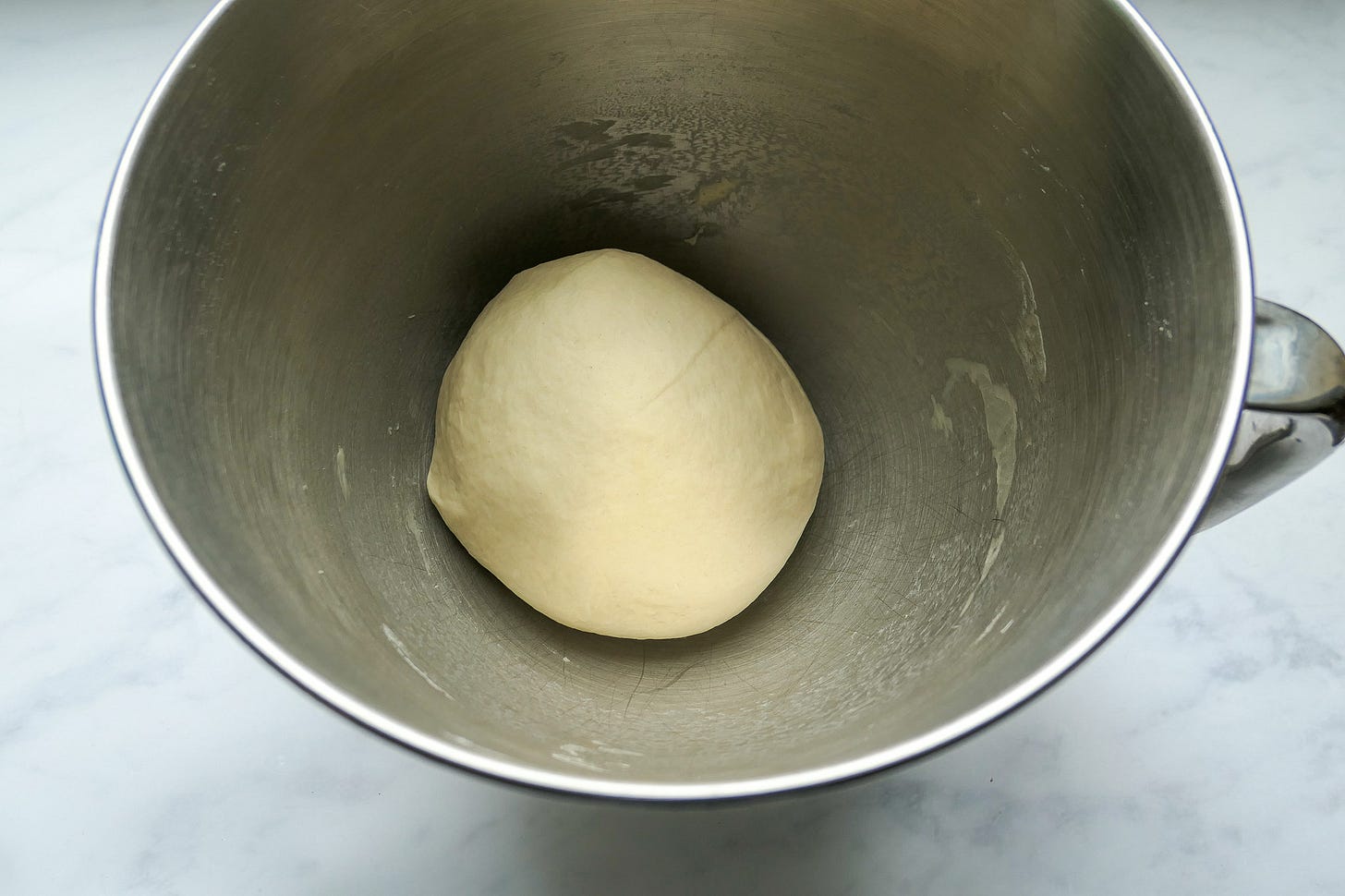
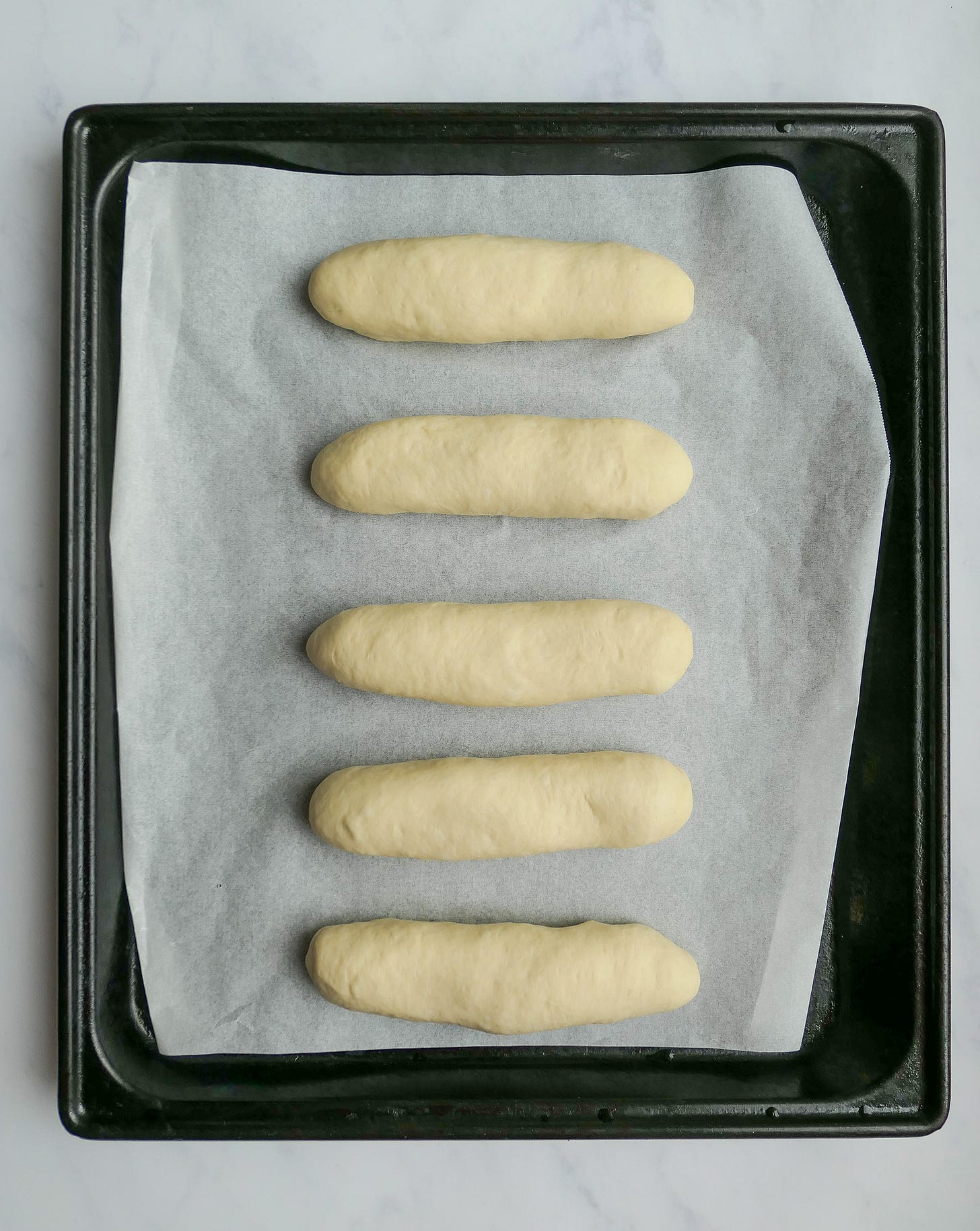
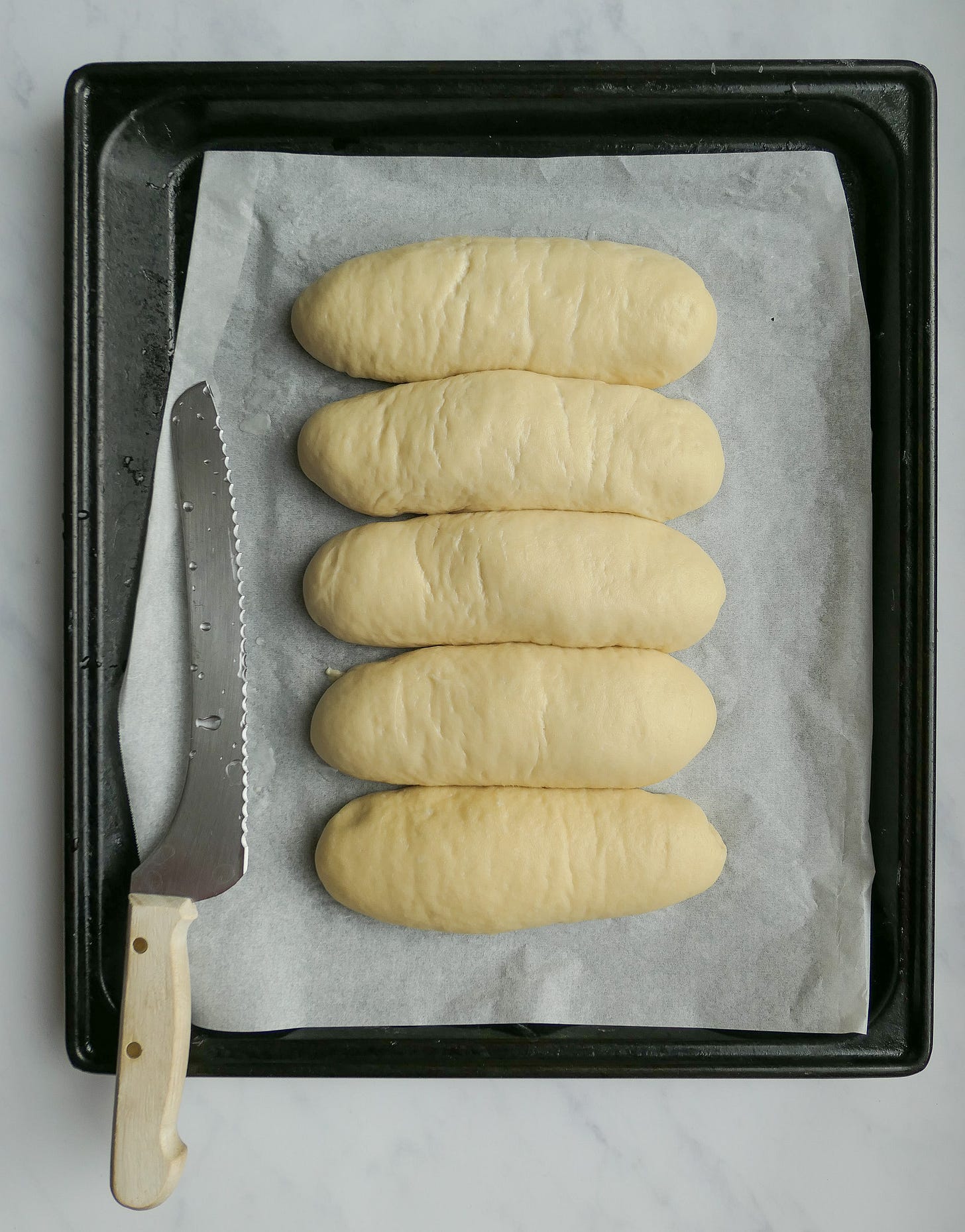
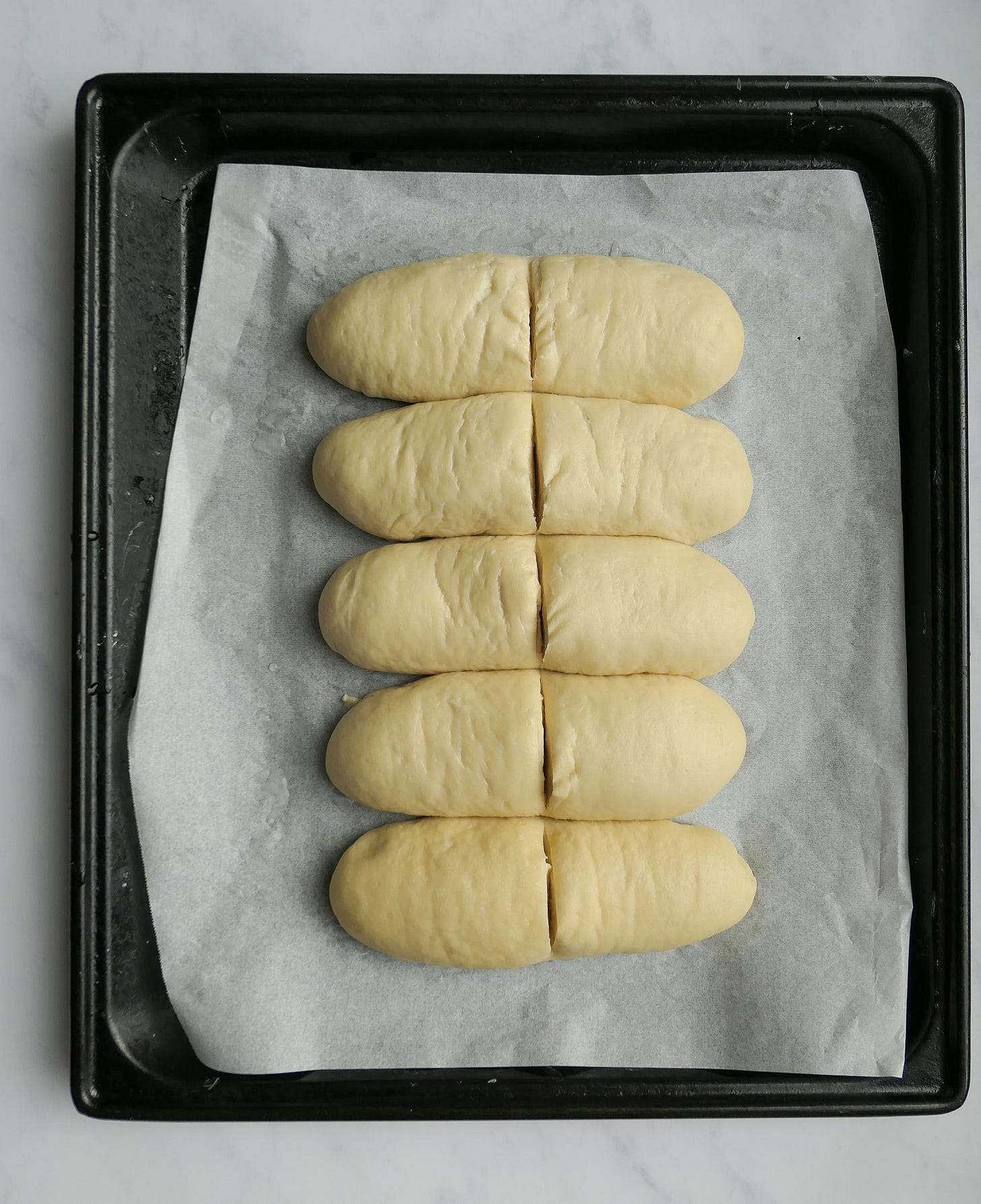
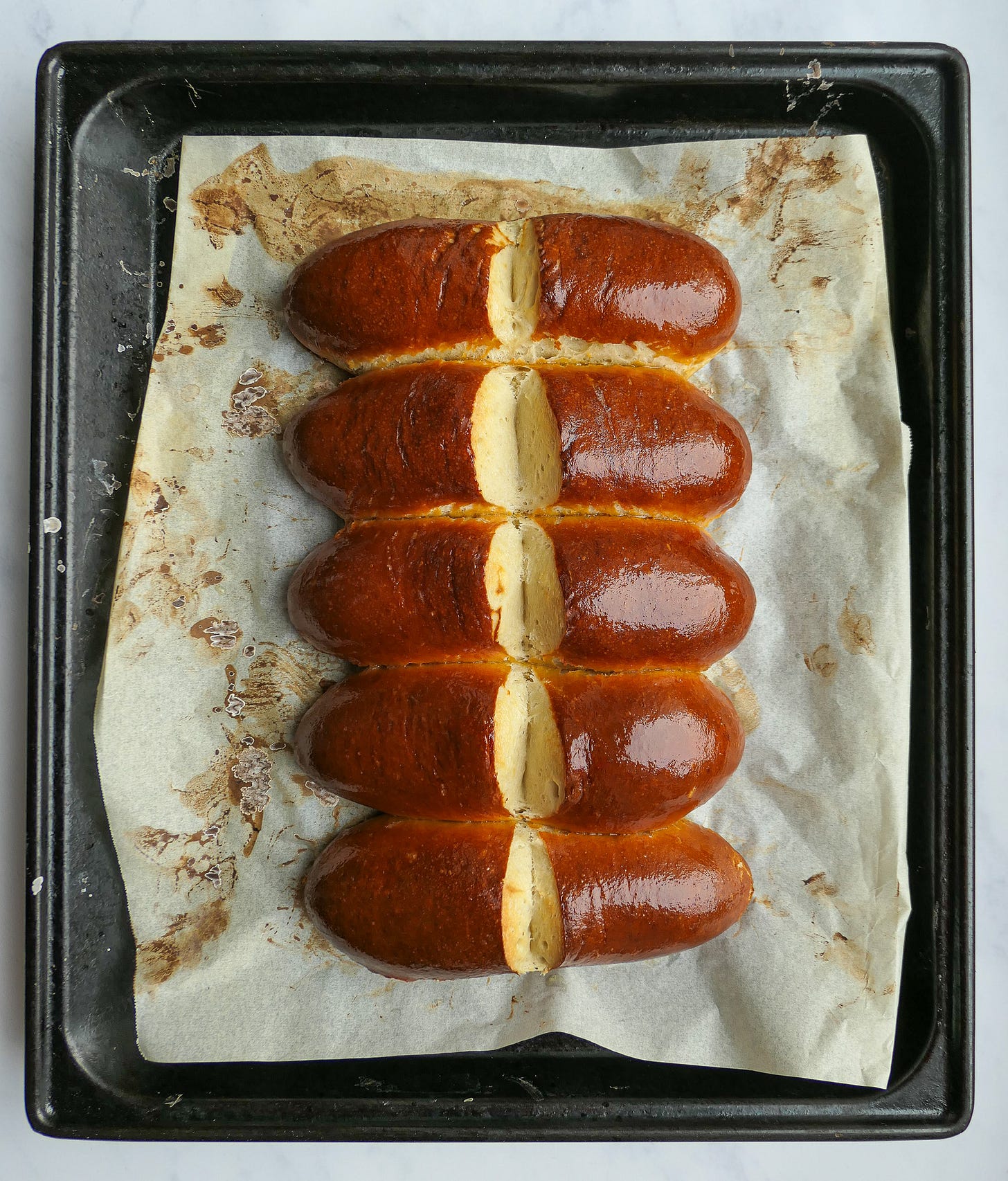
I ate these in Strasbourg, they're divine!
Oooh. These look so tempting! Saving to try later.